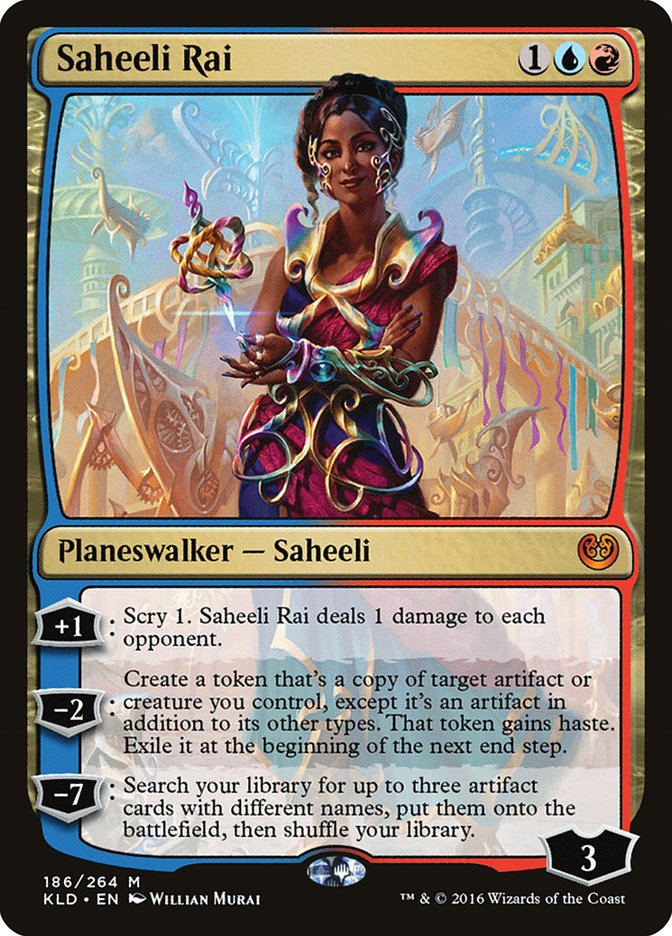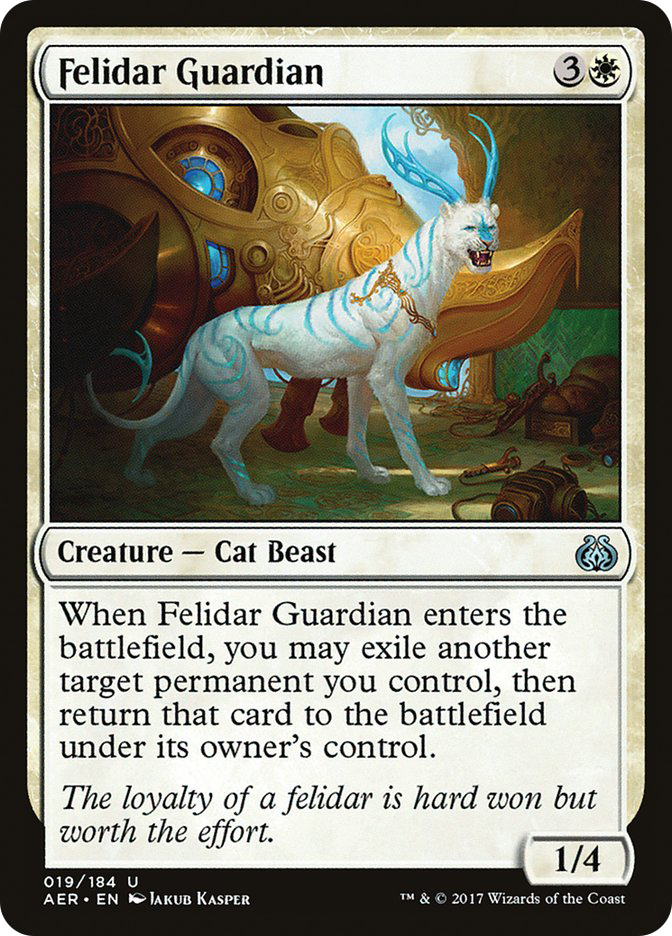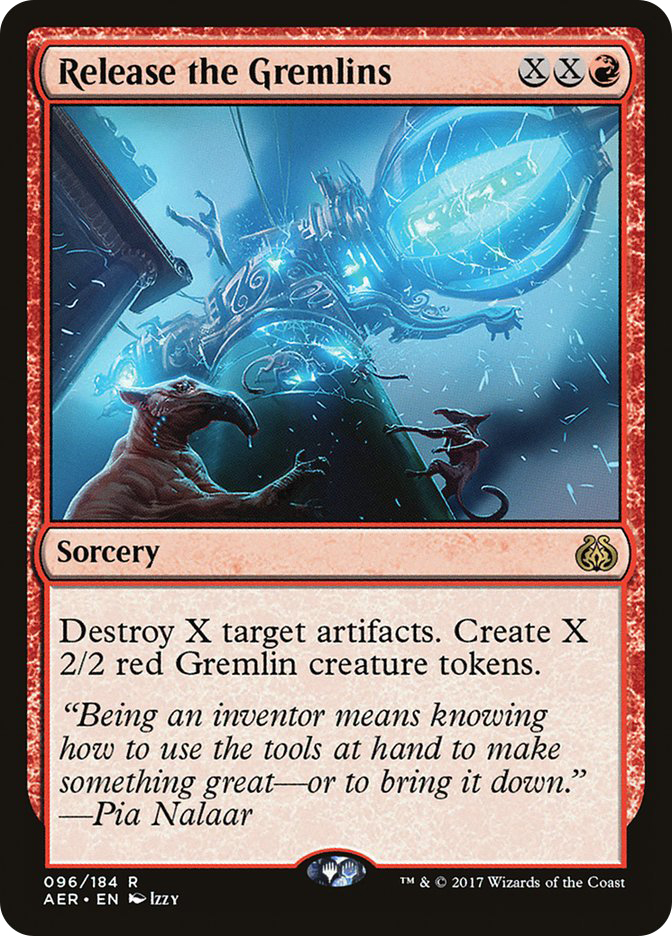Going into the Pro Tour, I kept telling people that I had this odd feeling that I should be on the right side of history. That meant playing a broken deck in a format where it might not be legal for much longer.
In hindsight, maybe I’m wrong about that, but I’ll get into that later.
This was my testing squad:
CFB Fire
Pat Cox
Martin Juza
Corey Burkhart
Josh Utter-Leyton (aka Wrapter)
Matt Nass
Paul Cheon
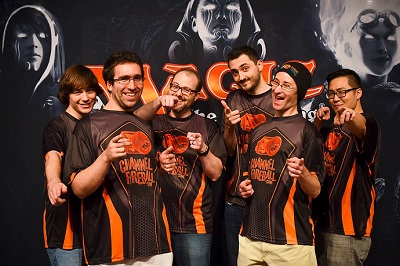
David Ochoa
Sam Black
Matt Severa
Justin Cohen
Josh Cho
Gerry Thompson (me!)
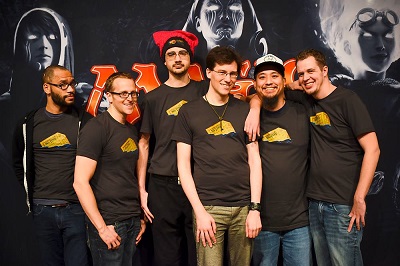
Team Canada
Rich Hoaen

Having been born in Minnesota, I cut my teeth on the Midwest PTQ scene. I go way back with the Madison guys. Despite that, Matt Severa still thinks I’m horrendous at Limited. Perhaps foreshadowing? Shrug.
I’ve worked with the CFB squad for multiple Pro Tours, including my lone Top 8 at Pro Tour Gatecrash. Both groups of people include some of the closest bonds I’ve formed throughout my years playing Magic, and it was a pleasure to work with them. It was easily one of the most enjoyable experiences I’ve had testing for a Pro Tour. Thanks, guys!
At the beginning of our process, we were basically posting brews and various draft decks, sharing random information. As the SCG Tour events started happening, I would share my thoughts from watching the coverage and looking at decklists.
Most of us showed up to Dublin around Monday so we could finally test in person. We didn’t do any live drafts, since it’s not the best use of time, and were mostly testing/discussing Constructed while some drafted on their laptops.
Pro Tour Testing Diary, Entry 41
Monday: Sam Black gives up on brewing after I beat him repeatedly with Saheeli Rai.
I’m shocked and concerned. That doesn’t stop me from falling asleep on a table, though.
The Saheeli Rai / Felidar Guardian combo is so fast and powerful that it invalidates a lot of the cool stuff you could otherwise do in the format. Unfortunate, but true.
Tuesday: Severa shows us Jund Vehicles, which Martin and I become interested in. Severa won a Grand Prix not too long ago with Mardu Vehicles, but didn’t like his chances with Toolcraft Exemplar and Veteran Motorist in a field of Walking Ballistas, so he turned to Elephants.
Wednesday: I make a few odd leaps of logic. Jeskai Saheeli and Four-Color Saheeli seem great, and good versions of those decks are gunning for B/G. No matter what you do with B/G, you’re going to have a difficult time in those matchups.
The more aggressive versions of B/G are much better off against Saheeli, but those decks are also worse versions of Jund Vehicles. Mardu Vehicles is excellent against the smaller B/G decks, although we were losing to Blossoming Defense.
Everyone starts calling me “Mardu Guy” and making fun of me.
Thursday: One by one, half the team shifts to Mardu Vehicles. We never really stopped to consider that other teams might do the same. I feel awkward because I’m halfway finished with my Mardu Vehicles article that is going up Friday of the Pro Tour, but I don’t want to rat my team out. Thankfully, they understand that I’ve got a job to do and have no objections to me submitting it.
I’m secretly working on perfecting Four-Color Saheeli. Matt Nass and Wrapter are playing a similar, but worse version of my deck.
They all thought I was locked in on Mardu since I was putting the most effort into it. Well, it just goes to show that you can know every fact about a person, but never know what’s going on in their heart. When they finally found out I was playing Four-Color Saheeli, they urged me to post my list in our team forum, which prompted more ribbing.
Some last-minute advice for Corey Burkhart (who audibled into Mardu) turns into a nostalgia-fest for me, where I’m able to relay a bunch of stories involving old-school friends of mine that are tangentially related to whatever we were talking about in the first place. One of the people in my stories, Will Brinkman, is a co-worker of Corey’s, which I had momentarily forgotten about.
I’m reminded that the world is a small place.
My sideboarding guide for Corey is roughly the same as the one Severa posts a little later, so I know I basically nailed it.
The Night Before
While I hadn’t played much Limited, the format is conducive to my strengths and our Limited meeting confirmed a lot of my suspicions. I reserved Thursday night as the time I would have for rapid-fire drafts. However, the internet got significantly worse and I couldn’t log onto Magic Online. I imagine the influx of pro players in the hotel likely caused it.
I went to sleep frustrated and worried about the tournament. The Standard deck I submitted was at least decent, and I thought I understood both formats well. It was time to cross my fingers.
I was in a haze the entire Pro Tour. While I’m kind of an expert at combating jet lag, as in I can acclimate to a normal sleep schedule with relative ease, that doesn’t mean my body adjusts well.
Everything is a little fuzzy.
The Pro Tour Itself
My first draft started about as well as you can hope. At the end of it, I had a fifteen-land aggressive U/R Improvise deck, which is exactly where I wanted to be. In hindsight, I made three heinous picks in the draft, which is a new feeling for me. I would never claim that I don’t make mistakes, especially while drafting, but at least I’m confident in my ability to rationalize why I’m selecting each card. The uncertainty definitely got me this time.
My 2-0 start made me feel pretty good, until Tom Martell kept a hand without a second land or Winding Constrictor, yet played both on turn 2. The second game didn’t go any better for me.
At least I got to continue my tradition of the camera cutting to me as I’m getting attacked for lethal in a Pro Tour.
Sigh.
The Standard rounds felt surprisingly easy, and I ended Day 1 at 6-2, which is certainly an above-average record for me, but I had mixed feelings. My loss to Tom Martell stung, as did my final-round loss. It might seem obvious, but 6-2 is a much worse record than 7-1.
My second draft was a worse version of my first. I started with Pack 1, Pick 1 Release the Gremlins and got passed Scrapper Champion with a rare missing. After that, red dried up and I ended up U/B. Kind of disappointing, but very normal, and that typically means I read my spot well enough.
I had some removal this time, but wasn’t nearly aggressive as I wanted to be. Big Improvise monsters were my top end, but I really had no way to break through if the battlefield stalled. Ideally I’d have some tricks or something to break up double blocks, but I didn’t have many options. Thankfully, I had great sideboard options that my first deck lacked, so I was actively hoping to play against X/1s and decks with artifacts.
A slow and painful 0-3 was my reward. Each of my opponents had fat green decks. My own fatties were outclassed and my sideboard was useless. Different pairings could have yielded different results, but who knows.
As people asked me my record throughout the day, I was frequently faced with shocked reactions. “4-1? Wow! Nice job.” I mean, yeah. My record is reasonably good, but don’t act so surprised that I’m winning. It’s kind of hurtful, heh.
I’m just going to start telling everyone I’m dead.
My 6-1 record plummeted to 6-7 in disastrous fashion, but I rallied back to 9-7 and got that extra Pro Point. 7-3 was my final record in Standard, and one of the best I’ve had in recent memory. Too bad I coupled that with one of my worst draft records.
My Standard deck was excellent. There are only a handful of the Pro Tours I’ve played where I can say that I mostly pegged the metagame and would change very little about my deck.
This is one of them.
Creatures (19)
Planeswalkers (4)
Lands (23)
Spells (14)

This deck looks like a mess, no? That’s both its blessing and its curse.
There’s a two-card combo, some Aetherworks Marvels, and random emerge creatures. How is this deck functional?
The gist is that I played this deck because I thought it had better backup plans than Jeskai Control, and I (rightfully) thought people would be gunning for the combo. Beating people down with random energy monsters while they tightly hold onto an Unlicensed Disintegration for fear of the combo worked out well. If I was trying to set up the combo, Elder Deep-Fiend could tap them out so I could do it safely.
Aetherworks Marvel was added at Wrapter’s and Matt Nass’s suggestion, and it played very well. The deck wanted a big energy sink anyway, since you sometimes end up with over ten energy. As it turns out, it’s your best card against B/G. I didn’t want to be a focused Aetherworks deck because the card is clunky and not particularly good against Mardu Vehicles. It’s also difficult to beat control when your best card walks into their Negates.
One of the main things I enjoyed about playing this deck was how wildly different the games were. In one game I’d be a combo deck, then a tempo deck the next, then a Marvel deck. Occasionally, like against Mardu Vehicles, I’d be a control deck.
In a field of Vehicles, Control, Saheeli, and B/G, I’d happily play this deck again.
I think I only used the combo five times in the tournament, but each time it was the only way I was going to win. Also, my sideboard was set up in such a way that I could sideboard out the combo and leave my opponent with a bunch of nonsense. Most of the games came down to my opponents being very worried about the combo, but losing to my other stuff. Sound familiar?
Maybe playing white cards past Felidar Guardian was ambitious. Getting white mana itself is almost trivial, but it comes at the cost of having additional sources of the other colors. Most of the time, it’s not an issue, but sometimes you have Rogue Refiner, Whirler Virtuoso, or Elder Deep-Fiend you can’t cast on curve.
Since you have Attune with Aether and only one of each of your off-color basics, there are many diminishing returns on additional basic land searchers. Evolving Wilds frequently disappointed, so if you move away from the white sideboard cards, your manabase can improve by miles.
Sideboarding Guide
Mardu Vehicles
In:
Out:
I went 2-1 against this deck at the Pro Tour, and while my loss involved me not casting a whole lot of spells, I wouldn’t be surprised if the matchup is more difficult than my numbers suggest. Then again, I have a bunch of removal, road blocks, card advantage, and ways to control the battlefield.
Kozilek’s Return was a typically a two-for-one, but for whatever reason, I never got to “Flashback” it. The third copy is likely overkill.
If they sideboard in a pile of disruption, feel free to keep in the second Aetherworks Marvel.
Control
In:
Out:
If they have Dynavolt Tower, sideboard in a single Natural State, but don’t be overly concerned about it. Their energy is limited and can’t keep up with your card advantage. If you’re on the combo plan, you can tap it with Elder Deep-Fiend.
If they have Spell Queller (or the combo), you’ll want to keep in some Harnessed Lightnings. If they are particularly hateful against the combo, you can potentially trim more pieces, although the combo pieces are fine value cards.
What I really wanted in these matchups was a Courser of Kruphix. I desperately wanted to hit all my land drops while also not flooding out. Tireless Tracker is a reasonable add because of that.
Nissa, Vital Force was in most of my lists leading up to the Pro Tour because it was a card that allowed me to Regrowth the entire combo with just one card. Once my plan became about shaving combo pieces, I no longer wanted expensive, Negate-able cards. Aetherworks Marvel is an exception because they basically can’t remove it and it will eventually overpower them.
Fitting everything in post-sideboard was tricky sometimes, and I’d be lying if I said I didn’t sideboard up to 61 cards at least once. I hate that rule so much because it enables my looseness, but here we are. Midway through the tournament, I was starting to feel the effects of being a mana source heavy, and this gave me a way to combat that.
Sideboarding out a land would have been easier (and better), but getting stuck on two land is not something I was interested in.
B/G
In:
Out:
Simple.
I noticed I had some issue beating large Walking Ballistas with both of my plans. Clearly I wanted an answer to that. I started by bastardizing my manabase in order to sideboard Fumigate, but Baral’s Expertise is a better Fumigate, especially when you have a battlefield presence. It conveniently deals with Walking Ballista and is an excellent hit off Aetherworks Marvel.
Surprisingly, you don’t need much help in this matchup.
What I Would Play at Grand Prix Pittsburgh
Now that I’ve got some tournament experience under my belt, plus the metagame is going to shift post-PT, I can present my new list.
Creatures (19)
Planeswalkers (3)
Lands (22)
Spells (16)
Sideboard

As the format gets more aggressive, the worse Saheeli Rai gets, both as a card you plan on casting turn 3 and as a combo enabler. Shaving one is completely defensible, as comboing people before they combo you probably isn’t necessary anymore.
The move away from white is necessary based on what it does to the mana and how relevant it is in today’s metagame. Tireless Tracker, Lumbering Falls, and a bunch of counterspells allow you to still play the tempo game well. Having a counterspell for Torrential Gearhulk would be nice, but ultimately unnecessary. Aetherworks Marvel is up to three copies in the maindeck, but I wouldn’t be surprised if that was too much.
My sideboard plan against Mardu Vehicles now includes sideboarding in the Dispels. Aethersphere Harvester is fine, but likely lackluster. Release the Gremlins could be great, but I’m wary about expensive sorceries against their Metallic Rebukes. Ideally we’d be able to get some Ishkanah, Grafwidows in the sideboard, but I’m not convinced you turn on delirium with any sort of regularity against them, especially once the Evolving Wilds are out of the deck.
With all the additional blue sources in the manabase, you should have no problem emerging Elder Deep-Fiend.
The random Shock is because I expect the format to get faster and we have more red sources to cast it early. For now, it’s a placeholder, but one that’s probably fine.
Other than those random musings, I like this deck a lot and would happily register it for Grand Prix Pittsburgh.
Would I Ban the Combo?
Despite the combo being hated out at the Pro Tour, I think I would. It’s not a matter of the combo being overpowered, but what it does to the format. There are a lot of cool things out there that could be a part of the metagame if Felidar Guardian weren’t a part of it. For the sake of diversity, I would pull the trigger.
Best of all, I don’t think many people would mind.
Mixed Feelings
I never thought I’d be proud of a 128th-place finish in any tournament, but here we are. Some combination of one of my best starts with my one of my best understandings of the metagame made it a tournament I was happy about, despite my medium finish. The result shouldn’t be what dictates how well you think you did. The Draft record stung, but I’m looking forward to correcting my mistakes for the next one.
The best part of the weekend was how multiple people told me they qualified with my G/W Tokens deck, and that the articles and podcasts helped them, which made me feel great. You want to know why I keep doing what I do? Exactly that.


